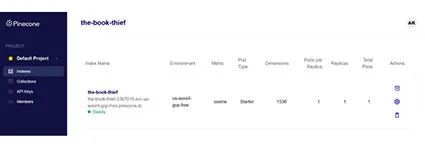
Sanman
Senior Front-End Developer
Front-end development is an ever-evolving discipline, demanding creativity, precision, and efficiency. While tools like JavaScript frameworks and libraries have significantly streamlined development, the integration of Artificial Intelligence (AI) is revolutionizing the way front-end developers work. Whether you’re a seasoned coder or just starting, AI can enhance your productivity and creativity in remarkable ways.
In this blog post, we’ll explore how AI is shaping the daily activities of front-end developers and making their lives easier.
1. Automated Code Generation
AI-powered tools like GitHub Copilot, Tabnine, and others are game-changers. These tools use machine learning models to predict and suggest code snippets based on your project’s context. For example:
- Code Completion: AI can autocomplete lines of code, reducing the chances of syntax errors and saving time.
- Boilerplate Generation: Need a standard component or a repetitive structure? AI can generate boilerplate code quickly.
- Custom Functions: By analyzing existing patterns in your code, AI can suggest custom implementations tailored to your project.
Example:
You start writing a React component. An AI tool suggests the component's structure, hooks, and styling snippets. What previously took 15 minutes now takes 5.
2. Debugging and Error Detection
AI excels at spotting bugs and offering solutions in real-time. Tools like DeepCode and SonarQube analyze your codebase for potential vulnerabilities or inefficiencies and suggest fixes.
Key Benefits:
- Early Detection: Catch bugs as you write code instead of during testing.
- Suggestions: AI provides actionable suggestions for resolving issues.
- Security Alerts: Detect and fix security vulnerabilities automatically.
For example, AI might highlight a poorly optimized loop or an unsafe API call, providing explanations and alternative implementations.
3. Design Assistance and Prototyping
Front-end development often involves translating UI/UX designs into functional interfaces. AI tools like Figma's AI plugins or Adobe's Sensei are bridging the gap between design and development.
How AI Helps:
- Auto Layouts: AI can auto-generate CSS and HTML layouts from a Figma design.
- Responsive Design: AI can predict and generate responsive versions of a component for different screen sizes.
- Color and Style Suggestions: Struggling with color combinations or typography? AI suggests optimized styling options.
AI-driven tools can even generate wireframes or initial prototypes based on a basic idea, giving you a head start.
4. Code Optimization and Refactoring
Messy code is every developer's nightmare. AI tools assist with optimizing and refactoring your codebase for better performance and readability.
Benefits:
- Performance Improvements: AI suggests optimizations like reducing API calls or minimizing DOM manipulations.
- Clean Code: It enforces best practices such as modularization and DRY (Don’t Repeat Yourself).
- Legacy Code Modernization: AI can help migrate older codebases to modern frameworks or syntax.
For instance, if you’re using outdated JavaScript syntax, AI tools can automatically convert it to ES6 standards.
5. Accessibility Enhancements
Creating accessible websites is crucial for user inclusivity. AI can scan your web pages and highlight areas where accessibility falls short.
Capabilities:
- Alt Text Generation: AI tools like Microsoft's Azure Cognitive Services generate alt text for images.
- Contrast and Readability Checks: Ensure that text and backgrounds meet accessibility guidelines.
- Keyboard Navigation Testing: Validate that your site works seamlessly without a mouse.
AI ensures your projects comply with standards like WCAG (Web Content Accessibility Guidelines).
6. Testing and QA
Front-end testing is vital but often time-consuming. AI accelerates this process by automating test creation and execution.
Key Tools:
- Test Generation: Tools like Testim and Applitools use AI to write UI tests based on your existing workflows.
- Visual Testing: AI detects visual regressions and layout shifts across browsers and devices.
- Performance Monitoring: AI-driven tools analyze loading times and suggest optimizations to improve performance.
By automating repetitive testing tasks, AI allows developers to focus on building robust features.
7. Personalization and User Behavior Insights
AI also helps in creating dynamic, personalized user experiences by analyzing user behavior and suggesting UI adjustments.
Use Cases:
- Recommendation Engines: Build personalized content suggestions using AI algorithms.
- Heatmaps: Tools like Hotjar leverage AI to analyze where users click or scroll the most.
- A/B Testing Automation: AI can determine the best-performing variations of your interface automatically.
8. Enhanced Collaboration
AI-powered project management tools like Jira's AI integrations or Trello AI assistants improve team collaboration by automating tasks like issue tracking, sprint planning, and status updates.
- Generate summaries of code changes: Share concise updates with team members.
- Automate pull request reviews: AI can provide detailed comments on pull requests.
A Smarter Future for Front-End Development with AI
AI is not here to replace front-end developers but to empower them. By handling repetitive tasks, optimizing workflows, and offering creative insights, AI enables developers to focus on what matters most: creating engaging and functional user experiences.
As AI continues to evolve, its role in front-end development will only grow. Embracing AI-driven tools today ensures you stay ahead in this dynamic industry. So why not leverage the power of AI to unlock your full potential as a developer?

Here are some AI tool prompts tailored for front-end developers to maximize productivity across different tasks:
1. Code Generation and Suggestions
- General Code:
Generate a responsive navbar component in React with dropdown menus and hover effects. - Styling:
Provide a CSS snippet for a grid layout that adjusts to three columns on desktop and one column on mobile. - Specific Features:
Write a function in JavaScript to validate email input and display error messages dynamically.
2. Debugging and Error Fixing
- Syntax Issues:
Debug this React component with an error: 'Cannot read property of undefined' in line X. - Optimization:
Analyze this JavaScript code for performance bottlenecks and suggest improvements. - Security Checks:
Identify potential vulnerabilities in this frontend code and recommend fixes.
3. Design Assistance
- HTML/CSS Generation from Mockups:
Convert this wireframe description into a fully responsive HTML/CSS layout: Header, three-column section, and footer. - Color Suggestions:
Suggest a color palette for a modern, tech-focused website with blue as the primary color. - Responsive Design:
Generate media queries for a card component that adjusts padding and font size across desktop, tablet, and mobile.
4. Accessibility Improvements
- Alt Text:
Create alt text for an image of a person working on a laptop at a café with plants in the background. - Accessibility Scan:
Analyze this webpage's HTML and suggest changes to improve accessibility based on WCAG 2.1 guidelines. - Keyboard Navigation:
Ensure this modal dialog component is accessible for keyboard-only users.
5. Testing and QA
- Unit Tests:
Generate unit tests for this React form component using Jest and React Testing Library. - End-to-End Tests:
Write a Cypress test script for verifying the login flow: input validation, successful login, and error handling. - Performance Testing:
Suggest tools and techniques to evaluate the rendering performance of a React application.
6. User Behavior and Analytics
- Heatmap Analysis:
Analyze this webpage layout for potential areas where user engagement might drop based on common design patterns. - Personalization Ideas:
Suggest ways to personalize a homepage for users returning after their first visit. - A/B Testing Plan:
Outline an A/B testing strategy to evaluate two versions of a landing page headline.
7. Collaboration and Code Reviews
- Code Summary:
Summarize the changes in this pull request for easier review. - Documentation:
Generate a README file for a project using React, Tailwind CSS, and Node.js for the backend. - Task Suggestions:
Based on this project timeline, suggest tasks for the next sprint focusing on front-end improvements.
8. Prototyping and Ideation
- Wireframe Ideas:
Generate ideas for a homepage layout for an e-commerce site focused on sustainable products. - Feature Suggestions:
What features should a user profile page include for a fitness-tracking app? - User Flow:
Describe a user flow for signing up and customizing a dashboard in a SaaS application.
9. Code Refactoring
- Legacy Code:
Refactor this JavaScript ES5 code to ES6 standards with cleaner syntax. - Performance Tuning:
Optimize this React component to reduce unnecessary re-renders. - Componentization:
Break this monolithic React component into smaller, reusable components.
10. Learning and Development
- Concept Clarification:
Explain how CSS Grid differs from Flexbox with examples. - Framework Tutorials:
Provide a step-by-step guide for setting up a Next.js project with Tailwind CSS. - Best Practices:
What are the best practices for structuring large React applications?
Conclusion
AI is changing how front-end developers work by simplifying complex tasks and saving time. From automating coding to improving design and user experience, it makes the process faster and more efficient. Developers can focus more on creativity and innovation with AI tools. If you want to explore how AI can optimize your development process, connect with Bluetick Consultants today!













